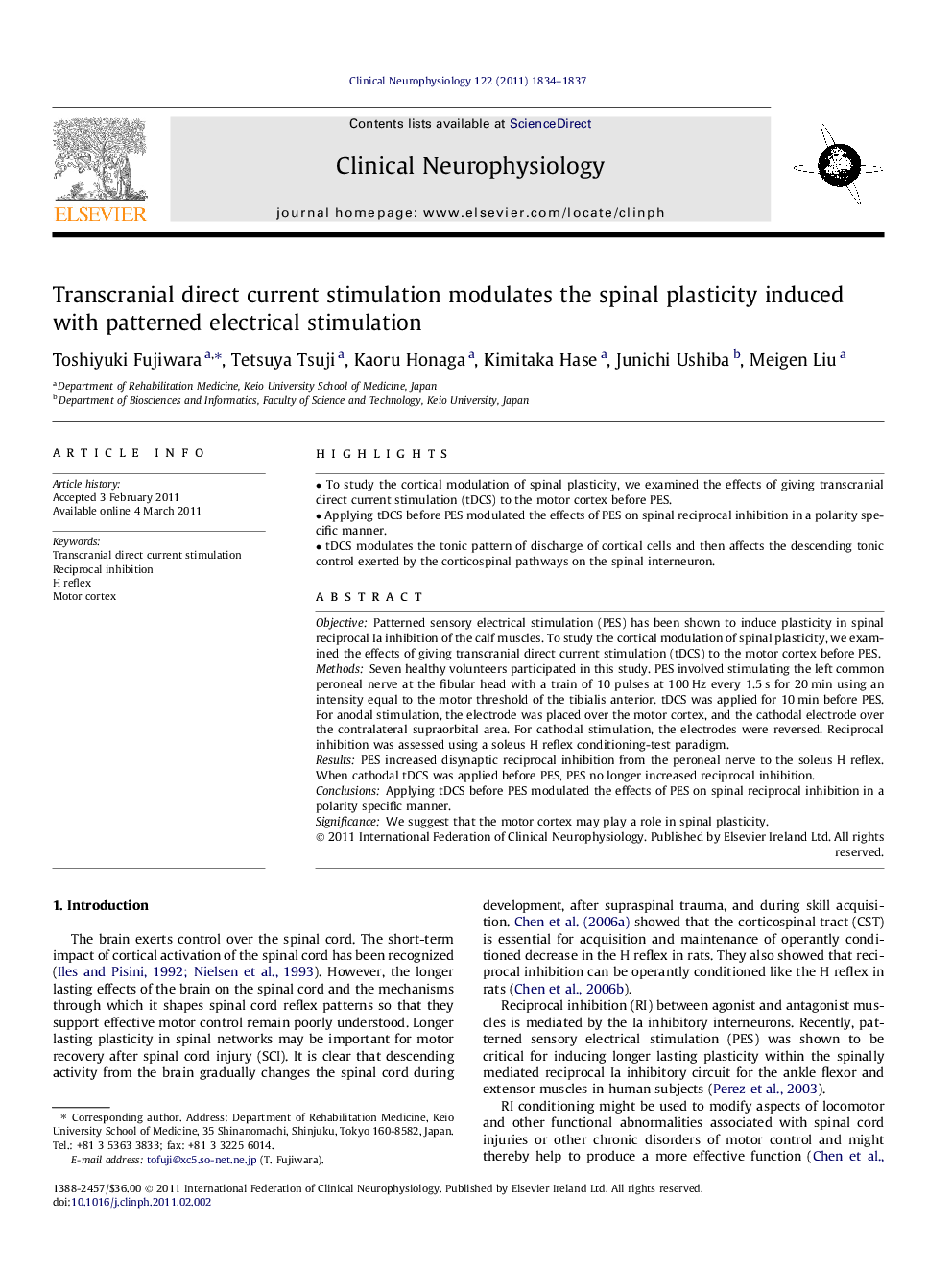| Article ID | Journal | Published Year | Pages | File Type |
|---|---|---|---|---|
| 3045793 | Clinical Neurophysiology | 2011 | 4 Pages |
ObjectivePatterned sensory electrical stimulation (PES) has been shown to induce plasticity in spinal reciprocal Ia inhibition of the calf muscles. To study the cortical modulation of spinal plasticity, we examined the effects of giving transcranial direct current stimulation (tDCS) to the motor cortex before PES.MethodsSeven healthy volunteers participated in this study. PES involved stimulating the left common peroneal nerve at the fibular head with a train of 10 pulses at 100 Hz every 1.5 s for 20 min using an intensity equal to the motor threshold of the tibialis anterior. tDCS was applied for 10 min before PES. For anodal stimulation, the electrode was placed over the motor cortex, and the cathodal electrode over the contralateral supraorbital area. For cathodal stimulation, the electrodes were reversed. Reciprocal inhibition was assessed using a soleus H reflex conditioning-test paradigm.ResultsPES increased disynaptic reciprocal inhibition from the peroneal nerve to the soleus H reflex. When cathodal tDCS was applied before PES, PES no longer increased reciprocal inhibition.ConclusionsApplying tDCS before PES modulated the effects of PES on spinal reciprocal inhibition in a polarity specific manner.SignificanceWe suggest that the motor cortex may play a role in spinal plasticity.
► To study the cortical modulation of spinal plasticity, we examined the effects of giving transcranial direct current stimulation (tDCS) to the motor cortex before PES. ► Applying tDCS before PES modulated the effects of PES on spinal reciprocal inhibition in a polarity specific manner. ► tDCS modulates the tonic pattern of discharge of cortical cells and then affects the descending tonic control exerted by the corticospinal pathways on the spinal interneuron.
